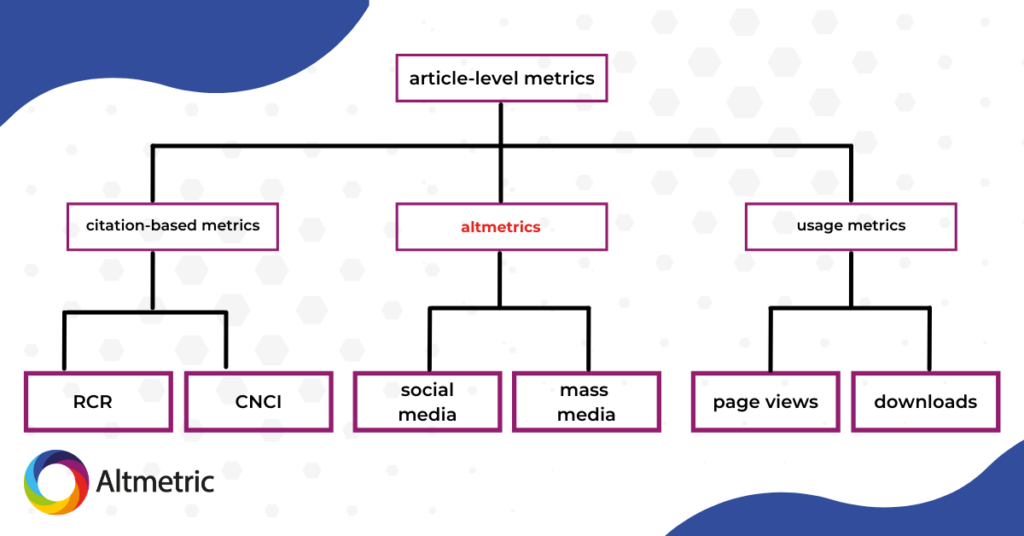Metrics terminology

There are many different metrics that attempt to measure the reach and influence of scholarly work. They primarily fall into one of three categories:
- Article-level metrics: indicators that aim to measure the reach or influence of an individual research output such as a journal article or data set. Example: number of citations
- Journal-level metrics: indicators that aim to measure the reach or influence of a journal. Example: Journal Impact Factor
- Author-level metrics: indicators that aim to measure the reach or influence of an individual author. Example: h-index
Journal-level and author-level metrics are quite straightforward, but article-level metrics, also known as output-level metrics (because any scholarly output with a unique identifier be tracked), tend to cause a bit of confusion.
The confusion often stems from a misunderstanding of the term altmetrics. Altmetrics stands for alternative metrics, not article-level metrics. The two are not synonymous. Altmetrics are indicators of non-traditional attention and engagement with scholarly outputs, such as attention on social media or in the mass media.
The Altmetric Attention Score is one example of an article-level metric. Other examples include: citation counts, Relative Citation Ratio (RCR), Category Normalized Citation Impact (CNCI), and Field Weighted Citation Impact (FWCI).
Then there are usage metrics. Usage metrics include page views, downloads, and shares. Some people categorize usage metrics as a type of article level metric, while others count usage metrics as an entirely different category. At Altmetric, we do not track usage metrics.
Here is an image that may help you visualize how article-level metrics and altmetrics are related:

It’s important to remember to use these metrics responsibly and for their intended use. For example, you shouldn’t use a journal-level metric to assess the performance of an individual.
To learn more about the responsible use of metrics, consider reading The Leiden Manifesto for Research Metrics¹. Visit the Metrics Toolkit to learn more about different types of metrics and their limitations, data sources, appropriate use cases, and more.
- Hicks, D., Wouters, P., Waltman, L. et al. Bibliometrics: The Leiden Manifesto for research metrics. Nature 520, 429–431 (2015). https://doi.org/10.1038/520429a
